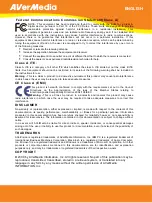
2 - 9
If the camera is now folded, the reverse happens: VER opens from B+ and is then shorted to GND. This
discharges a capacitor in the Power Supply, so that when the Camera is later erected, the microprocessor
knows the strobe should be topped off.
As mentioned above, it is the Door Latch, not the Door, that affects the B+ wire of the Power Switch. The
reason is to prevent application of power and motor start when the Door is almost but not fully closed. The
camera could attempt to darkslide and to rotate the drive gears in the Mainframe before they were smoothly
and fully meshed with the gears in the Door. Thus closing the Door has no effect on the power circuit, but
latching the Door does.
Conversely, using the Door Latch in the power circuit rather than the Door also means that power is cut off
before the Door is opened and the gear mesh is broken. When the Door is unlatched, the Door Latch cam
allows the Door Latch Sensor to pivot upward (CW), driving the B+ wire upward and out of contact with
VER.
Maintaining Power for Processing after Camera is Folded
Folding the camera from an erect position would normally cause the Erect Link and Erect Sensor to shut off
the power, as just described. But folding the camera while a processing cycle is taking place (after the
mirror is down) must not be allowed to interrupt the power. If it did, the motor would stop in mid-cycle,
ruining the picture.
How does the camera maintain power long enough to complete the processing cycle, after it has been
folded? Figures 2-10 and 2-11 show how the novel Power Actuator Assembly, in conjunction with the
movement of the Film Shade, performs this critical power-maintaining function.
In Figure 2-10, at the start of the film processing cycle, the camera is erect and power is on because the
Erect Sensor is holding VER in contact with B+. If the camera is now folded, wireform VER would
normally drop down, opening B+ to VER and killing power.
Figure 2-10. Power On at Start of Processing (Camera Erect)
Содержание Joshua Captiva
Страница 6: ...This page intentionally blank...
Страница 7: ...1 1 1 Description...
Страница 15: ...1 9 Figure 1 6 Joshua System Features...
Страница 23: ...1 17 Figure 1 16 Principal Parts of the Joshua Drive System...
Страница 31: ...1 25 Figure 1 22 Joshua Components Covers and Panels...
Страница 32: ...This page intentionally blank...
Страница 33: ...2 1 2 Theory of Operation...
Страница 36: ...2 4 Figure 2 1 Pictorial ChartShowing JoshuaCamera Sequence of Operation...
Страница 57: ...2 25 Figure2 31 Circuit Diagram...
Страница 58: ...This page intentionally blank...
Страница 59: ...3 1 3 Testing and Adjustments...
Страница 72: ...This page intentionally blank...
Страница 73: ...4 1 4 Disassembly and Reassembly...
Страница 108: ...This page intentionally blank...
Страница 109: ...5 1 5 Troubleshooting...
Страница 122: ...5 14 5 14...
Страница 123: ...5 15 Figure 5 7 Joshua Camera Timing Diagram...
Страница 124: ...This page intentionally blank...
Страница 125: ...A 1 Appendix...
Страница 134: ...This page intentionally blank...
















































